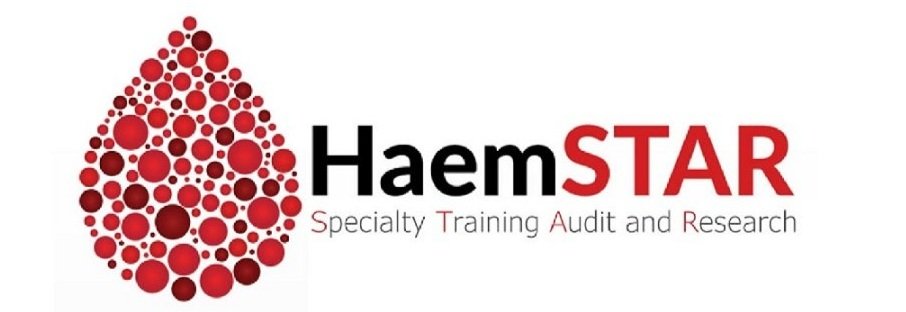Letting Go
It was with mixed emotions that I handed over the HaemSTAR chair role June 2023. After the initial discussions with Cheng-Hock Toh, Dan Hart and Mike Desborough that led to the formation of HaemSTAR in 2017, the network has become something for which I feel an over-exaggerated sense of responsibility, a bit like it was one of my children. HaemSTAR has been steadily growing up and maturing and I've been gradually devolving responsibility for its various aspects to others over the years. Looking back, I do sometimes wonder if I was trying to find excuses to stay being a registrar, just so I could get HaemSTAR to the point where it would no longer require my parental support. But my 10 year tenure as a registrar finally came to an end this year and I realise that HaemSTAR has come-of-age to a point where it can manage perfectly well without me (thank you very much).
Hence the trepidation I feel about finally letting go. But I have a lot of reassurance in knowing that it is being run by such a fantastic committee and that it will be safe with Richard Buka at the helm. I've known him since 2018 and he is a great guy. Among his many qualities, he brings a refreshing naivety and energy with him (which is why I sometimes describe collaborating with him as akin to trying to direct an over-excited puppy). He has already indelibly stamped HaemSTAR with his entrepreneurial spirit and has rightly identified some further opportunities to provide research training and so it is very exciting to see the plans for the educational webinars and podcasts coming together so quickly.
HaemTRIAL
Having said all that, I'm not completely ready to sever all ties with my offspring. With the help of Andy Doyle at GSTT, I aim to address two of HaemSTAR's limitations; firstly is the question of what happens when our study leads and regional representatives when they complete their registrar training and are no longer 'eiligible' for HaemSTAR membership; and secondly is the recurring criticism of HaemSTAR that the truly self-led projects have all been retrospective. HaemSTAR has been able to collect vast amounts of data in short periods of time, but any retrospective data is subject to bias that is impossible to eliminate. This will ultimately limit the research's applicability. And whilst HaemSTAR has undoubtedly enthused a generation of trainees and involved them in research studies, have any of the HaemSTAR projects thus far made a real difference to patient care? These limitations of retrospective studies are why the gold standard medical evidence for anything is the prospective randomised controlled trial (RCT). As a collaborative of registrars who have a time-limited engagement with the network, HaemSTAR has been unable to run any prospective studies. This is mainly because of the time commitment involved and the need to have a permanent contract in order to be considered as a chief investigator. Hence the development of an aligned network for senior registrars and consultants with an interest in running clinical trials that aim to answer important questions in non-malignant haematology.
Our vision is that HaemSTAR will continue to provide training and networking for haematology registrars through collaborative retrospective studies. This educates and up-skills trainees but also generates hypothesis generating and produces baseline data which can be used to develop prospective clinical trials through the new sister network; Haematology Trials, Research, Innovation and Learning (HaemTRIAL).
An example of how HaemSTAR and HaemTRIAL can complement each other:
There is little evidence to support venesection in secondary polycythaemia. There is robust data that aggressive venesection of patients with primary polycythaemia reduces thrombosis and mortality (Marchioli et al., New Eng J Med. 2013). There is good evidence that polycythaemia, regardless of cause and independent of confounders such as obesity and smoking, is associated with a modest increase in thrombosis and mortality (Wouters et al., Blood Advances 2020). But the only evidence of the benefit of venesection in secondary polycythaemia comes from small physiological studies done between the 1960s and 80s which show transient benefit in symptoms and small improvements in physiological markers such as pulmonary blood flow (Wade et al., Brit J Med. 1981, Weisse et al., Am J Med. 1975, Segel & Bishop. J Clin Inv. 1966). There is no evidence that venesection for any secondary polycythaemia improves mortality, thrombosis, or even HRQoL let alone anything that defines a target haematocrit. This has led to guidelines that say 'consider' venesection in this patient group (McMullin et al. Brit J Haematol. 2018) and a resultant wide variation in practice and patient experience. It would be great to run an RCT of venesection vs observation for patients with secondary polycythaemia. I feel there is a win-win here that either justifies and refines our current practice or allows us to discharge these patients from secondary care. But we lack justification for a clinical trial because this variation in practice is not well documented and we do not know whether clinicians would be willing to randomise their patients into such a study. I was also amazed to find that we do not know the annual thrombosis rate for patients with secondary polycythaemia, whether venesected or not. This makes it challenging to design an adequately powered study. HaemSTAR can solve all these problems; an audit of current practice combined with a clinician survey would overcome all of the barriers to setting up a clinical trial that could then be run by HaemTRIAL.
Like HaemSTAR, clearly the HaemTRIAL model will evolve with time and experience but we felt it was time to share our vision. Thank you to all of you who have been involved in the HaemSTAR network these past six years. What has been achieved would have been impossible without you.
Pip Nicolson
If you would like to contact me about HaemSTAR or HaemTRIAL - please email me: pnicolson@nhs.net


